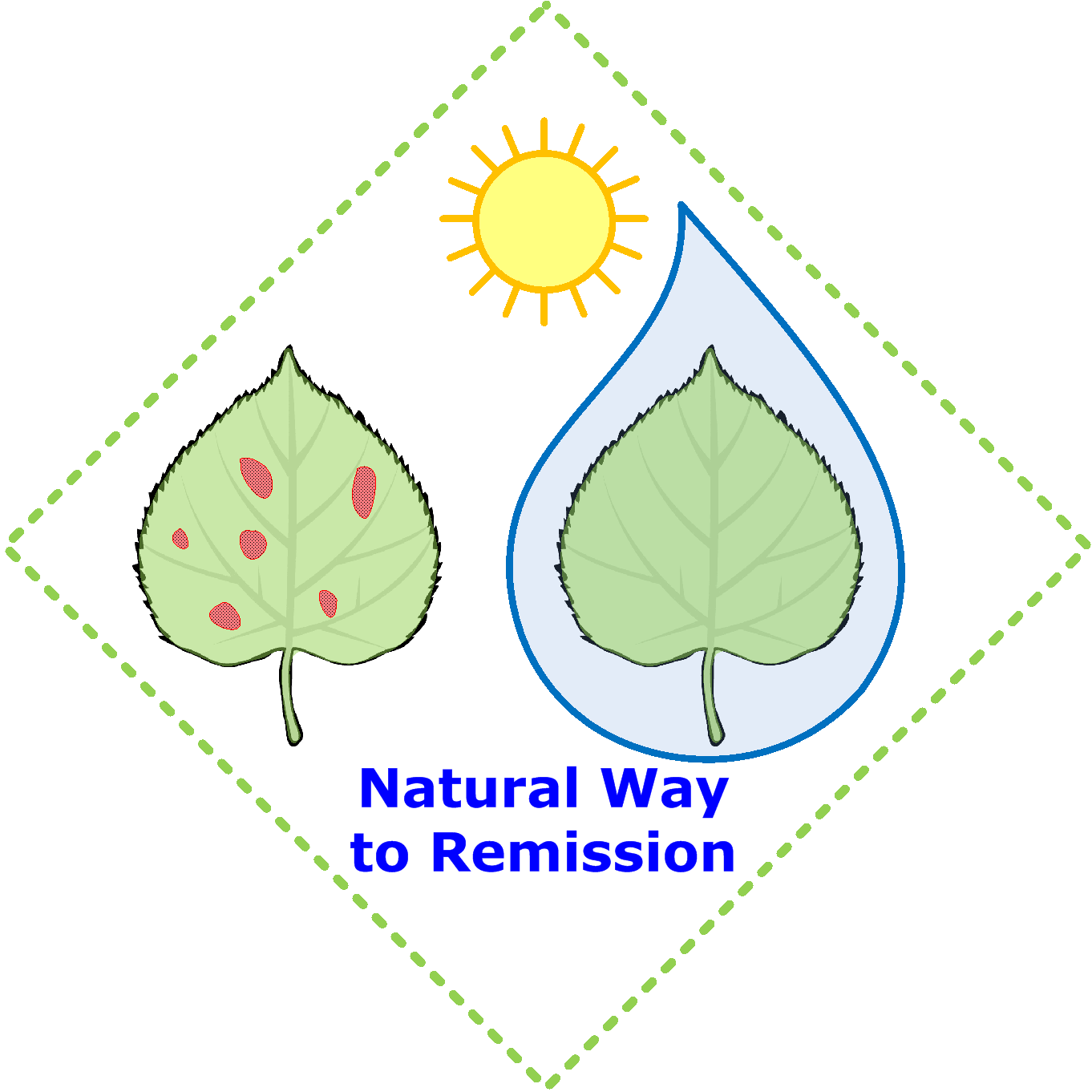
"Natural way to Remission"

 |
Project "Natural way to Remission" |
 |
|
As a part of the project “Natural Way to Remission,” patients learn about basic diets, methods for creating individual diets, fasting diets, gastrointestinal cleansing procedures, and monitoring psoriasis using PASI.
The information is provided on necessary tests and procedures, provoking diseases of oral cavity, diseases of upper respiratory tract and gastrointestinal tract, SIBO, i.e. about everything that affects or can affect psoriasis negatively or positively.
Information on phage therapy and course treatment of psoriasis is also given, including the materials which have already been published.
The Guide is intended for psoriatic patients who wish to achieve sustainable and long-term remission under coach guidance.
The main purpose of filling in the Guide and collecting information is to determine characteristics of two main factors SP1 and SP2, as well as characteristics of other factors that influence the two main ones.
The filled Guide, as well as the results of tests and examinations, monitoring of symptoms, sleep and rest, exercise, diet, etc. (in the form of files or read-only access to resources) allows a coach to give recommendations on the individual diet, treatment courses, exercise and, in general, lifestyle. In case of identification of factors influencing (provoking and/or aggravating) the two main factors, a patient will have to undergo course(s) of treatment and/or change their lifestyle to eliminate (reduce the impact of) the influencing factors.
Influencing factors include, but are not limited to, excess weight, chronic oral and URT infections, Helicobacter, helminths, impaired peristalsis, etc.
Elimination (reduction of impact) of the influencing factors, normalization of the level of the two main factors will lead to a long-term and sustainable remission of psoriasis.
The Guide has been developed and improved over several years, with participation of leading medical specialists, support of Antipsoriatic Association, and also involving communication with psoriatic patients.
Between 2013 and 2021, many psoriatic patients gradually eliminated the influencing factors, switched to individualized diets, underwent one or more courses of treatment, changed their lifestyles to healthier ones, and achieved a long-term and sustainable remission of psoriasis. The Guide consists of 14 sections. The results of tests and examinations are considered relevant if completed no earlier than one year from the date of filling in the Guide.
If you do not have up-to-date results when you initially fill out the Guide, you can provide older results. However, they will need to be updated later.
The results of genetic tests are an exception, since they do not have expiration date.
Some sections of the Guide (as well as individual items in other sections) must be completed during the initial filling in. These sections and items are marked bold.
The subsequent completion of the Guide, additional tests and examinations must be carried out according to the coach’s recommendations.
Almost all non-invasive tests and examinations will need to be performed (if not previously performed during the last year).
The need for invasive testing will depend on the results of non-invasive tests (sections 8, 9 and 10) and the coach's recommendations.
In cases where biomaterial can be collected independently (swab from oral mucosa, exhaled air, urine, feces, etc.), many laboratories offer test kits with home delivery.
This allows you to collect biomaterial at home in special test tubes, send it to a laboratory by mail, and see results in your account or receive them by email.
The original table “Guide Sections” is located in an Excel file on sheet “A.Main”.
Each section is on a separate sheet of this Excel file.
It is more convenient to view and fill out the Guide on a desktop.
|
Guide Sections |
1 |
Patient data |
|
All items in this section must be completed. |
2 |
Psoriatic disease (PsD) ** |
|
|
|
All items in this section must be completed. |
3 |
PASI definition |
|
All items in this section must be completed. |
4 |
Standard blood tests |
|
All items in this section must be completed. |
|
Necessary for the objective assessment of a patient's health condition. |
5 |
Oral and URT (upper respiratory tract) diseases ** |
|
Answers to questions 5.1 and 5.4 are mandatory. |
|
Chronic infectious diseases of oral cavity and URT are constant factor that maintains SIBO. |
6 |
Culture and susceptibility (reference section) |
|
This section is not to be filled in. Results are entered in those sections (marked **) that contain links to tests listed in this section. |
|
Bacterial and (or) fungal carriage is constant factor that aggravates PsD course (if present on psoriatic skin), |
7 |
Diet, food allergens and PPS (potentially problematic substances) |
|
Answers to questions 7.1 – 7.4 are mandatory. Tests for food allergens may not be performed if the answer to item 7.3 is “no”. |
| Testing for lactose intolerance is required. At least one of tests 7.8 - 7.11 must be performed. | |
| Testing for (latent) celiac disease is required. Tests 7.12 - 7.18 must be performed. | |
|
Information on basic diet, tests for food allergens, as well as for some PPS (lactose and gluten) are intended to identify factors that provoke two main factors supporting PsD. This information is necessary for formation of individual diet. |
8 |
Helicobacter pylori, research and tests ** |
|
Answer to question 8.1 is mandatory. |
|
Helicobacter infection in gastric mucosa and/or duodenum mucosa aggravates PsD course. Helicobacter can be cause of hypochlorhydria (one of SIBO causes). Hypochlorhydria can occur for long time (several months) even after Helicobacter elimination. |
9 |
Hepatobiliary system and pancreas ** |
|
Answers to questions 9.1 and 9.2 are mandatory. |
|
Examination of these systems allows to identify deviations from a norm, determine their severity, assess impact on SIBO and, perhaps, first conduct a course of treatment to normalize their functioning. |
10 |
Gastroenterological diseases, research and tests ** |
|
Answers to questions 10.1 and 10.2 are mandatory. |
|
This section is designed to identify characteristics of the two main factors supporting PsD - small intestinal permeability and SIBO. This section is also designed to identify other factors (diseases or syndromes) that provoke increase in the level of the two main factors. |
11 |
Risk factors for development and maintenance of SIBO |
|
All items in this section must be completed. |
|
This section is intended to identify these factors (in addition to those already listed in other sections). |
12 |
Basic regimen |
|
All items in this section must be completed. |
|
Nutrition, intestine cleansing, exercise, etc. |
13 |
Contraindications to intestine lavage procedure |
|
All items in this section must be completed. |
|
One of important components of treatment courses is intestine lavage. |
|
|
14 |
SIBO treatment course |
| All items must be filled in if you have previously undergone one (or more) such course of treatment. | |
|
|
| Additional tabs | |
15 |
US Provider Search |
| US provider search by procedure. This tab contains the main resources for searching for procedure providers in the United States. You can use one of several of them to find the most suitable provider (by location and/or by cost). You can search using codes, but also by keywords in the procedure name. | |
16 |
Information (reference section) |
| This tab contains resources describing diseases, syndromes, tests and procedures. | |
17 |
LOINC code sets for cases where a test or procedure is described by more than one code. If one code is sufficient, then the reference to it is in the last column of the corresponding row. LOINC. The international standard for identifying health measurements, observations, and documents. |